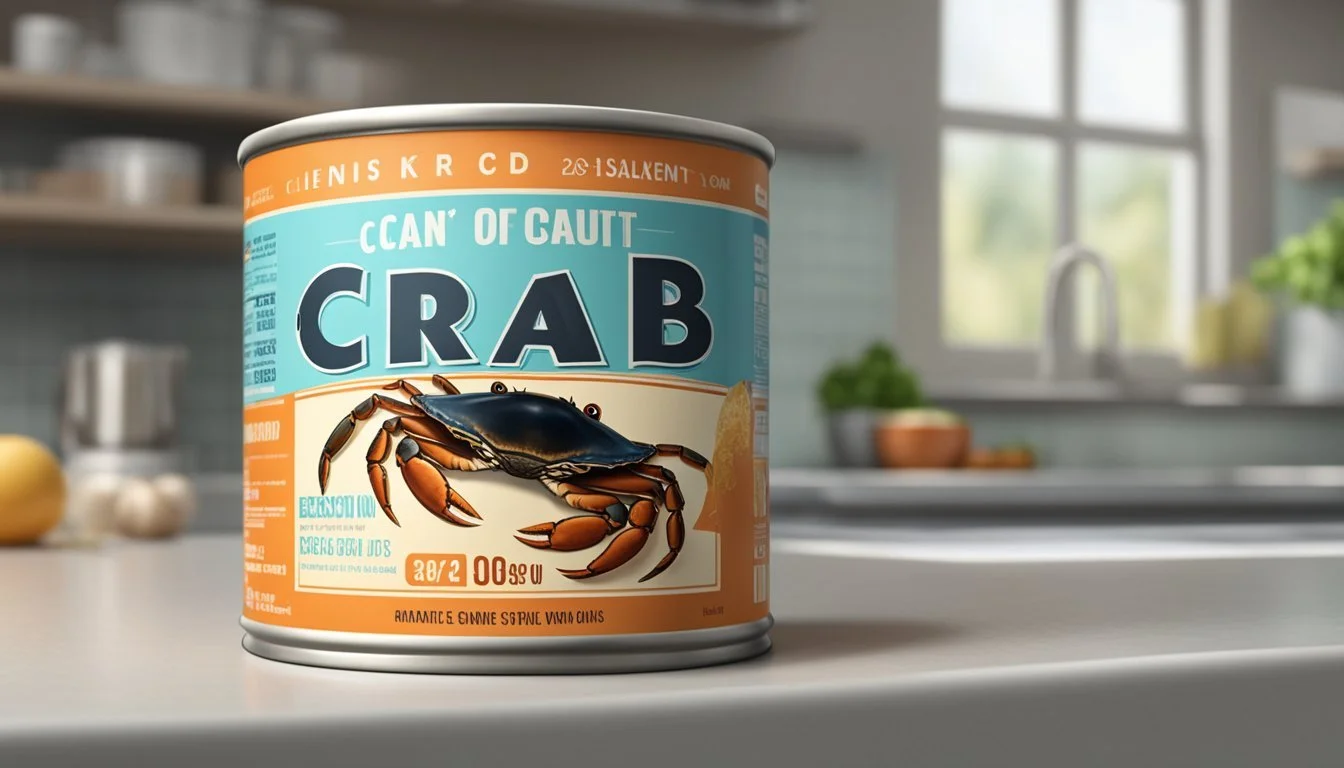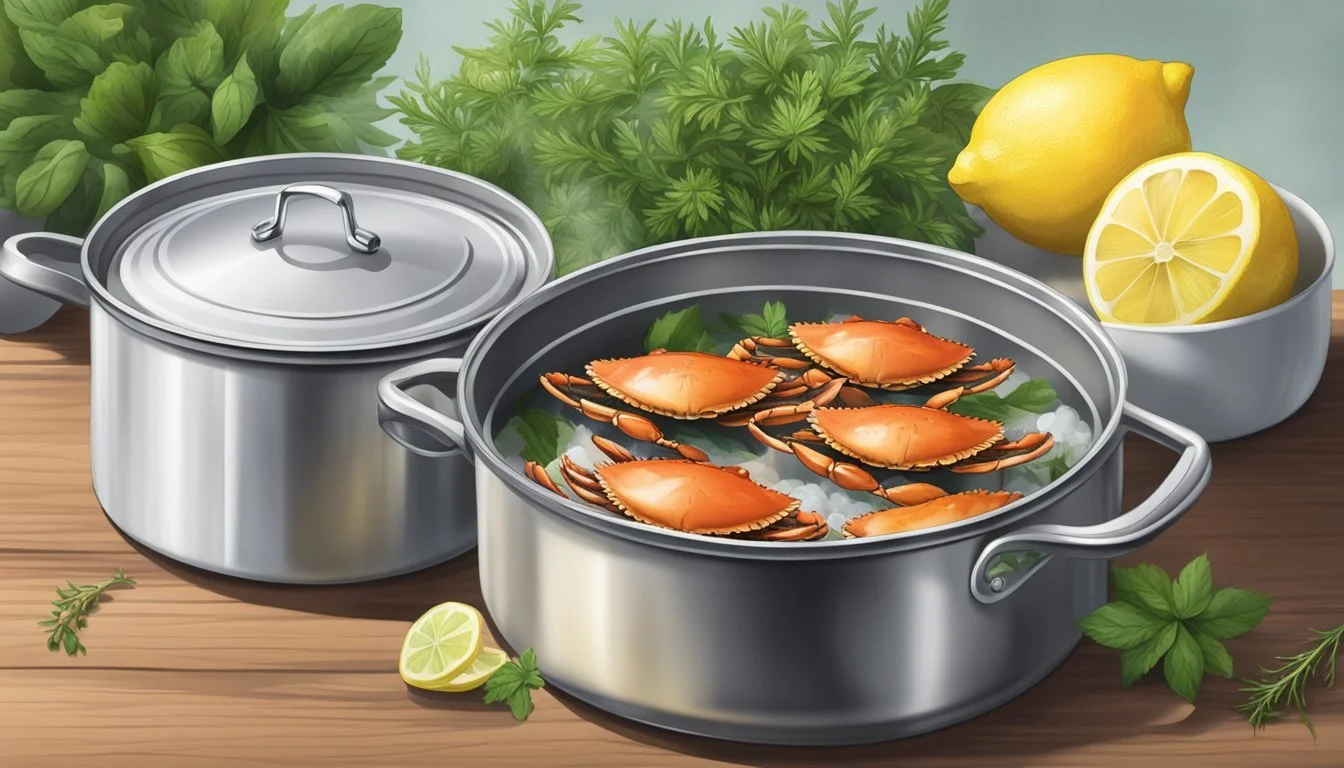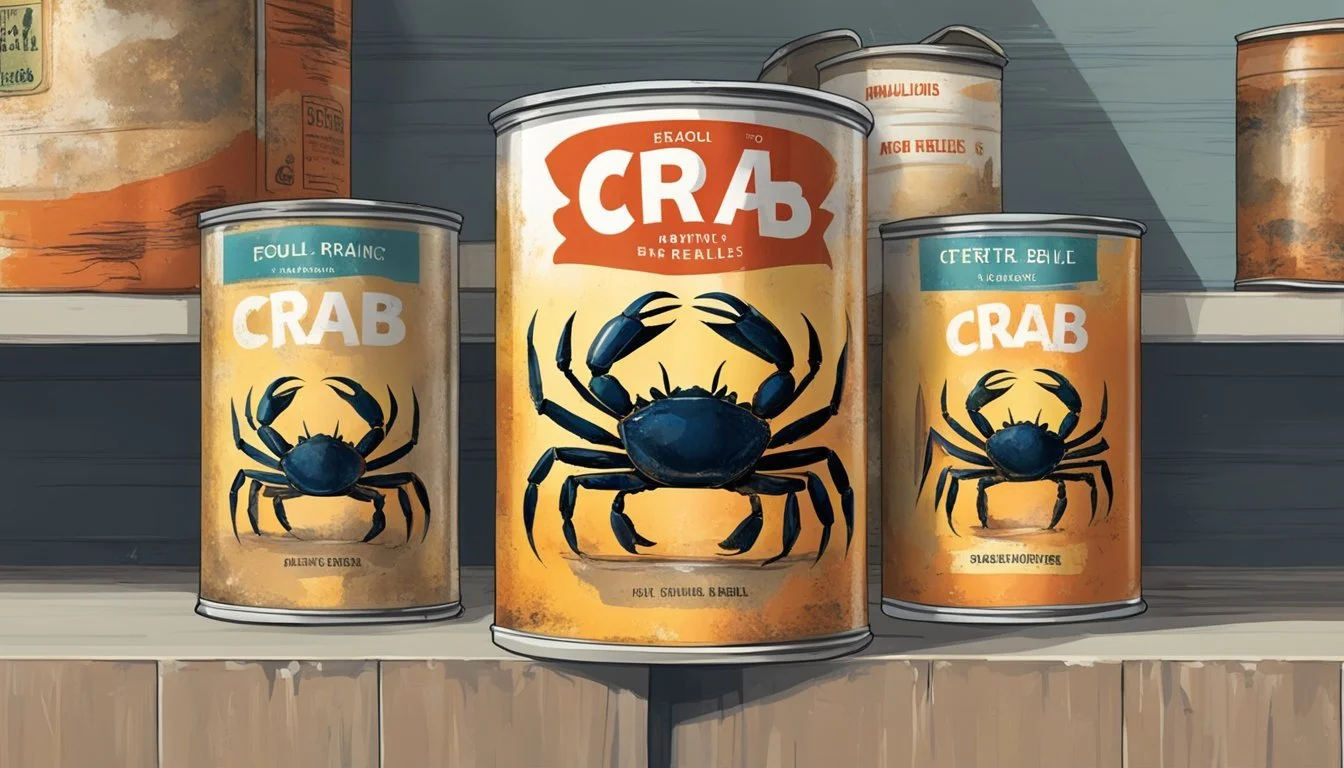Does Canned Crab Go Bad?
Shelf Life and Storage Tips
Canned crab meat is a convenient option for seafood lovers, but many wonder if it goes bad over time. Unopened, shelf-stable canned crab meat typically lasts 2-4 years in the pantry, depending on the manufacturer and storage conditions. It's crucial to keep an eye on the quality by checking for any discoloration, sour odor, or mold growth, which are signs that the crab meat has spoiled.
When it comes to opened canned crab meat, its shelf life significantly drops. For best quality, it should be consumed within 3-4 days after opening. The container should be properly sealed and kept refrigerated to maintain its freshness. If the crab meat develops an off odor or unusual appearance, it's wise to discard it to avoid any health risks.
Paying attention to the condition of the container is also essential. Discard any canned crab meat if the can is leaking, rusting, bulging, or severely dented, as these are indications that the product inside may be compromised. Knowing these key points can help readers confidently enjoy the best quality of canned crab meat.
Understanding Canned Crab
Canned crab provides a convenient way to enjoy seafood while maintaining safety and quality. This section will highlight the types of canned crab meat and the benefits it offers.
Types of Canned Crab Meat
Canned crab meat comes in various forms such as jumbo lump crab meat, pasteurized crab meat, and culinary reserve crab meat. Each type offers unique qualities for different culinary applications.
Jumbo lump crab meat consists of large, prized pieces of crab meat. It is ideal for dishes where size and texture are crucial, like crab cocktails.
Pasteurized crab meat is treated to destroy harmful bacteria, making it safe to eat and extending its shelf life. This type retains much of the texture and flavor and is perfect for salads and dips.
Culinary reserve crab meat is often hand-picked and steamed to preserve freshness and quality. It is suitable for high-end dishes where flavor and presentation matter.
Benefits of Canned Crab
Canned crab is not only convenient but also heart healthy, offering a low-fat and high-protein alternative to other meats. It is pre-cooked and ready to use, saving time in the kitchen.
Ingredients in canned crab often include crab meat, water, and salt. Minimal preservatives are used, and high-quality brands focus on maintaining the freshness and taste.
Additionally, canned crab has a long shelf life when stored properly. It can remain fresh for several years in a cool, dry pantry, making it a practical pantry staple for impromptu meals.
Using canned crab can ensure culinary versatility, enabling the creation of an array of dishes from appetizers to main courses. It's a reliable seafood option that doesn't compromise on taste or nutrition.
Shelf Life and Expiration
Canned crab meat can last anywhere from a few days to several years, depending on whether it is opened or unopened. Proper storage plays a crucial role in maintaining its quality and safety.
Unopened Canned Crab Meat
Unopened shelf-stable canned crab meat generally has a long shelf life. When stored in a cool, dry location, it can last between 3 to 5 years. During this time, it remains at its peak quality, although the precise duration may vary based on the manufacturer and packaging.
Expiration dates on unopened cans often include phrases like "best by", "best if used by", or "best before". These dates indicate when the product is expected to be at its optimal taste and texture, but the crab meat can still be safe to eat beyond these dates if there are no signs of spoilage.
Opened Canned Crab Meat
Once a can of crab meat is opened, its shelf life significantly decreases. It must be stored in a refrigerator to maintain its quality. Typically, opened canned crab meat should be consumed within 3 to 4 days. Although some sources note it can last up to 5 days, its freshness and flavor start to decline rapidly after the third day.
To ensure safety, always check for signs of spoilage, such as a sour odor, mold, or discoloration. Opened canned crab meat should be transferred to a sealed, airtight container before refrigeration to preserve its quality for as long as possible.
Proper Storage Conditions
Canned crab can maintain its quality and safety if stored correctly. Key concerns include keeping unopened cans in a cool, dry place and ensuring opened cans are transferred to appropriate containers and refrigerated.
Storing Unopened Cans
Unopened canned crab should be stored in a cool, dry place, such as a pantry. It's important to avoid exposing the cans to direct sunlight or moisture, which can cause deterioration. Ideal storage temperatures are between 50°F and 70°F.
General Guidelines:
Location: Pantry or cupboard
Temperature: 50°F to 70°F
Avoid: Direct sunlight, moisture, and heat
Unopened cans typically last 2 to 4 years but can maintain quality for up to 5 years if properly stored.
Storing Opened Cans
Once a can of crab is opened, it should be transferred to a glass or plastic airtight container. This helps prevent contamination and keeps the crab fresh. Opened canned crab should be refrigerated and consumed within 3 to 4 days. It's crucial to check the crab for any signs of spoilage, such as a sour odor or discoloration, before eating.
Key Points:
Containers: Airtight glass or plastic
Refrigeration Time: 3 to 4 days
Spoilage Signs: Sour odor, discoloration
Freezing and Refrigeration Guidelines
For longer storage, freezing is an option. Place the crab meat in airtight freezer bags or containers to avoid freezer burn. It's important to label the packages with the date to track storage time. Frozen crab meat should be used within 2 to 3 months for best quality. Refrigerated crab can last up to 3 to 4 days, as mentioned earlier.
Recommendations:
Freezing Time: 2 to 3 months
Containers: Airtight freezer bags or containers
Labeling: Date labels for tracking
Proper storage practices ensure the canned crab maintains its freshness and safety, allowing for enjoyable and safe consumption.
Identifying Spoilage
Understanding the signs of spoilage in canned crab meat is crucial for ensuring safety and quality. This includes examining visual and textural clues and paying attention to changes in odor and flavor.
Visual and Textural Clues
Visual and textural clues are some of the most immediate indicators of spoiled canned crab meat. Discoloration such as dark spots or an unusual color is a red flag. The texture is also important; sliminess or an excessively mushy feel are typical signs that the crab meat has spoiled.
Additionally, mold presence, though rare in canned products, signifies spoilage and contamination. By routinely inspecting the appearance and texture of the crab meat, consumers can quickly identify whether it is safe to eat or not.
Changes in Odor and Flavor
Changes in odor are often the most noticeable indicators of spoilage. Off odors, sour odors, or any unpleasant smell suggest that the crab meat is no longer good to consume. Fresh canned crab typically has a mild, oceanic smell; anything outside this norm should be approached with caution.
Flavor can also signal spoilage, though it's less ideal to rely on taste if spoilage is suspected. Spoiled crab meat may have a bitter or sour flavor, quite different from its fresh, slightly sweet taste. Detecting these changes early can prevent foodborne illnesses and ensure the seafood's quality.
Safety and Consumption
Proper handling and storage of canned crab are crucial for ensuring safety and maintaining quality. Below, the specific risks of consuming spoiled canned crab and best practices for its consumption are discussed.
Risks of Consuming Spoiled Canned Crab
Consuming spoiled canned crab can lead to foodborne illnesses. Bacteria such as Salmonella and Listeria can proliferate if the crab is not stored correctly. Symptoms may include nausea, vomiting, diarrhea, and abdominal cramps.
Signs of spoilage include:
Sour odor instead of a fresh briny smell
Mold or fuzzy growth on the crab meat
Discoloration such as dark or green spots
If any of these indicators are present, the crab should not be eaten. An undamaged, airtight container is vital to minimizing contamination risks.
Best Practices for Consumption
To ensure canned crab meat is safe to eat, it's essential to adhere to recommended storage guidelines. Unopened cans should be kept in a cool, dry area, maintaining quality for up to 3-5 years. Once opened, consume the crab within 3-4 days and always store it in the refrigerator.
Labeling the opened can with a date helps track freshness. Using clean utensils to handle the crab can minimize the risk of introducing bacteria. For the best experience, consume the crab within the first year of canning. Proper handling and storage can ensure the crab remains a safe and delicious part of any meal.
Maximizing Quality and Taste
Ensuring the quality and taste of canned crab requires proper handling and thoughtful incorporation into recipes. Key factors include rinsing, storage techniques, and recipe selection.
Handling and Preparing Canned Crab
To start, rinsing canned crab meat under cold water can remove any briny taste and improve freshness. Check for signs of spoilage such as sour odor, discoloration, or mold before use.
Storage is crucial; opened canned crab should be refrigerated in an airtight container and consumed within 3-4 days. Freezing canned crab meat in airtight containers extends its shelf life up to three months but affects texture. Avoid re-freezing for best results.
Incorporating Into Recipes
Canned crab can elevate various dishes. In sushi, its ready-to-eat nature simplifies preparation. In soups, it adds rich flavors without additional cooking. Salads and pasta dishes benefit from its convenience and taste.
Avoid excessive seasoning, as crab has a delicate flavor. Add at the end of cooking to maintain texture. Recipes can be adjusted to incorporate fresh crab meat if desired. Always prioritize quality to enhance culinary experiences.
Packaging and Containment Issues
Proper packaging and containment of canned crab meat are crucial for maintaining its quality and safety. Key indicators of compromised packaging include visible damage and faulty seals.
Identifying Compromised Packaging
Intact Packaging: Ensure the can is free of dents, rust, or bulges. Damage to the can may indicate compromised integrity and potential spoilage.
Leaking or Bulging: Cans that are leaking or bulging should be discarded immediately. These signs often indicate bacterial contamination and spoilage.
Rust and Severe Dents: Rust can weaken the can's structure, while severe dents might break the seal, both leading to spoilage. Inspect the can thoroughly before use.
Containers: Opt for airtight plastic containers if repackaging is needed. Properly sealed containers help prevent contamination after opening.
Summary Tables
Common Signs of Compromised Packaging
Issue Possible Indication Dents Seal breakage Rust Structural weakness Bulging Bacterial contamination Leaks Spoilage and contamination
By following these guidelines, the likelihood of consuming spoiled canned crab is significantly reduced. Always check packaging integrity to ensure safety.







